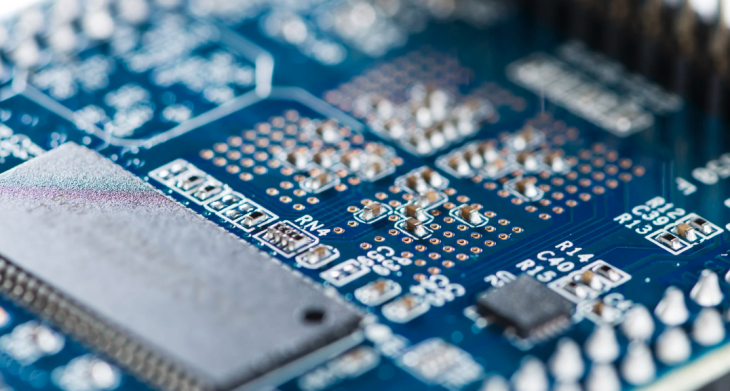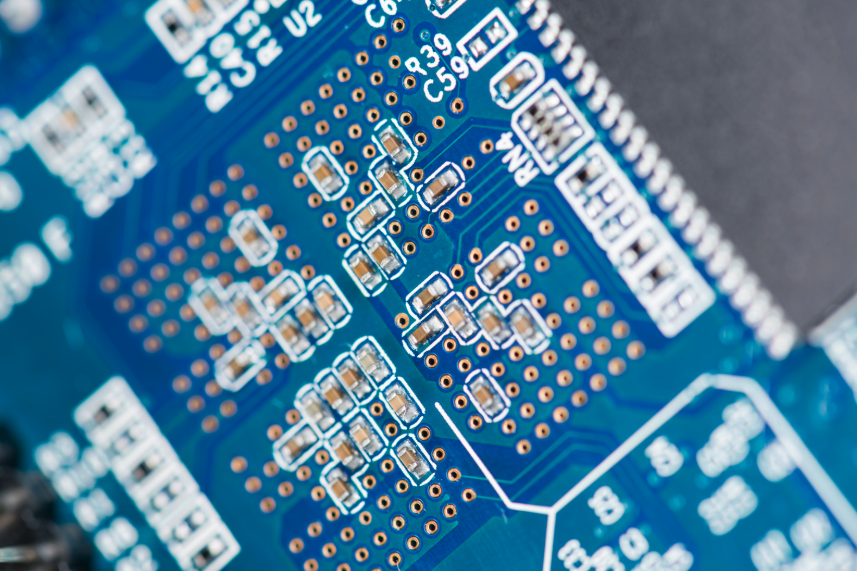
- July 9 2025
Every printed circuit board (PCB) tells a story — not just in its schematics but in the invisible rules that govern its creation. These rules, known as IPC standards, are the backbone of modern electronics manufacturing. Without them, the industry would be a Wild West of inconsistent quality, unreliable products, and costly inefficiencies.
Think of IPC standards as the grammar of PCB design and assembly. Just as poor grammar can derail communication, ignoring IPC guidelines can lead to faulty boards, production delays, and even catastrophic failures in critical systems.
But why do these standards matter so much? And how do they shape the way engineers, manufacturers, and designers work? Let’s break it down.
What Are IPC Standards? (And Why Should You Care?)
If you’ve ever wondered why electronics from different manufacturers can work together seamlessly, or how complex PCBs maintain reliability in harsh environments, the answer lies in a series of documents most engineers simply call “IPC standards.” Developed by the Association Connecting Electronics Industries (aka the IPC), these specifications form the universal language of PCB design, fabrication, and assembly.
At their core, IPC standards solve a fundamental problem: how to make electronics manufacturing repeatable, reliable, and scalable across a global supply chain. Without them, every factory would interpret “good quality” differently, every designer would make arbitrary layout choices, and every assembly line would invent its own soldering rules. The result? Chaos, in the form of incompatible components, unpredictable failures, and costly rework.
The Standards That Shape Our Industry
Three key documents form the backbone of PCB production:
- IPC-6012 – The bible for PCB qualification, defining everything from copper thickness to hole wall integrity
- IPC-A-610 – The visual guide to acceptable workmanship, used by QA teams worldwide
- IPC-J-STD-001 – The gold standard for soldering processes, from hand assembly to robotic lines
But these are just the headline acts. Over 300 active standards cover everything from cable harnesses (IPC/WHMA-A-620) to counterfeit component avoidance (IPC-1791).
Why This Matters to You
You might think compliance is someone else’s problem, until a batch of non-conforming boards arrives. Consider:
- A designer ignoring IPC-7351 land patterns may create components that can’t be reliably placed by pick-and-place machines
- A fabricator skipping IPC-6012 tests might ship boards that fail after six months in the field
- An assembler violating IPC-A-610 could let cold solder joints slip through, leading to warranty claims
In aerospace or medical devices, non-compliance isn’t just expensive, it’s dangerous. But even consumer electronics feel the pain: one study found IPC-compliant boards have 40% fewer field returns than non-compliant ones.
Beyond avoiding disasters, IPC standards deliver tangible benefits:
Everyone speaks the same language
When your design files say “IPC Class 3,” every qualified manufacturer understands exactly what you need, no need for endless emails clarifying requirements.
They future-proof your work
Standards evolve alongside technology. Today’s IPC-2223 for flexible circuits anticipates tomorrow’s rollable displays.
They’re your best defense
When a product fails, demonstrating IPC compliance shows you followed industry best practices, not just an engineer’s opinions.
IPC standards are about eliminating guesswork in an industry where mistakes cost millions. Whether you’re a designer, manufacturer, or quality engineer, these specifications are the closest thing electronics has to a universal truth. Ignore them at your peril; master them for competitive advantage.
The Three Pillars of IPC Standards
IPC standards form a structured framework that ensures every phase of PCB development, from design to assembly, meets rigorous quality benchmarks. These guidelines are the difference between a board that works and one that lasts.
Let’s examine the three core pillars that uphold PCB manufacturing excellence.
1. Design: The Rulebook for Reliability
A PCB’s performance is only as good as its design. IPC-2221 (the generic standard for PCB design) and IPC-7351 (land pattern guidelines) dictate everything from trace width to component spacing.
- Signal Integrity – Poorly spaced traces introduce crosstalk, and IPC standards enforce minimum clearances to prevent interference.
- Thermal Management – Inadequate heat dissipation leads to premature failure, and IPC guidelines ensure proper via placement and copper distribution.
- Manufacturability – A brilliant schematic means nothing if it can’t be produced efficiently. IPC-7351 optimizes footprints for automated assembly.
Without these rules, designers risk creating boards that function in a simulation but fail in reality.
2. Manufacturing: Where Precision Meets Repeatability
A design may be flawless on paper, but consistency crumbles if PCB fabrication isn’t standardized. IPC-A-600 defines what a “good” PCB looks like:
- Copper Thickness – Too thin, and traces overheat. Too thick, and etching becomes inconsistent.
- Hole Wall Integrity – Poorly drilled vias lead to broken connections under stress.
- Solder Mask Adhesion – Weak coverage exposes copper to corrosion and short circuits.
Manufacturers who skip IPC compliance risk boards that pass QA one day and fail the next.
3. Assembly: The Final Test of Quality
Even a perfectly designed and fabricated PCB can be ruined by sloppy assembly. IPC-J-STD-001 (soldering requirements) and IPC-A-610 (acceptability criteria) ensure consistency where it matters most.
- Class 1 (Consumer Electronics) – Allows minor cosmetic flaws, prioritizing cost-efficiency.
- Class 2 (Industrial/Medical) – Demands higher reliability, with stricter solder joint inspections.
- Class 3 (Aerospace/Military) – Zero tolerance for defects — every connection must survive extreme conditions.
A single cold solder joint can doom an entire assembly, and IPC standards eliminate guesswork to ensure every board meets its intended lifespan.
Why These Pillars Matter

These three elements — design, manufacturing, and assembly — form an unbroken chain of quality control. Break one link, and the entire system falters.
- Design errors lead to costly respins.
- Manufacturing inconsistencies cause field failures.
- Assembly defects trigger recalls.
IPC standards aren’t just recommendations — they’re the guardrails keeping the electronics industry on track.
The High Cost of Cutting Corners: When IPC Standards Are Ignored
Some manufacturers view IPC compliance as a bureaucratic hurdle rather than a critical safeguard. But in reality, skipping these standards is a gamble with devastating consequences. The electronics industry is littered with cautionary tales of companies that prioritized short-term savings over long-term reliability, only to face catastrophic failures down the line.
Imagine a major consumer electronics firm that opts for non-compliant soldering processes to speed up production. Early units pass basic functionality tests, but within months, field reports reveal widespread failures, faulty connections caused by inconsistent solder joints. The result? A recall affecting hundreds of thousands of devices, a tarnished brand reputation, and losses far exceeding the initial “savings” from bypassing IPC-J-STD-001.
The risks multiply in high-stakes industries. Let’s say a defense contractor discovers, too late that their PCB fabricator deviated from IPC-6012 Class 3 requirements. The boards worked fine in testing, but under real-world thermal cycling, microcracks formed in the via barrels. By the time the flaw was detected, entire batches of mission-critical hardware had to be scrapped. The lesson was clear: IPC standards exist because someone, somewhere, already paid the price for ignoring them.
Even beyond outright failures, non-compliance creates hidden inefficiencies. Without standardized design rules (IPC-2221), engineers and manufacturers waste countless hours interpreting vague specifications or reworking incompatible layouts. Supply chains fracture when different partners follow different rulebooks. And in an industry where margins are tight, these delays and miscommunications erode profitability just as surely as a defective product would.
The bottom line? IPC standards are about building a foundation for scalable, sustainable manufacturing. Companies that treat them as optional soon learn they’re anything but.
The Future of IPC Standards: Meeting Tomorrow’s Electronics Challenges
The electronics industry evolves at a breakneck pace, and IPC standards must keep up. What began as guidelines for rigid, through-hole PCBs now faces entirely new challenges, flexible wearables that bend thousands of times, AI chips pushing signal integrity limits, and sustainability demands reshaping PCB material choices. These are today’s engineering realities that require updated standards.
Miniaturization presents perhaps the most immediate challenge. As trace widths shrink below 50 microns — thinner than a human hair — traditional manufacturing tolerances no longer suffice. The IPC-6012EM addendum specifically addresses these High-Density Interconnect (HDI) challenges, introducing new rules for microvia reliability and stacked via structures. Without these updates, next-generation devices would risk signal degradation and premature failure.
Flexible electronics demand an equally radical rethinking of standards. IPC-6013D now includes rigorous testing protocols for dynamic flex applications, with some medical wearables requiring validation for over 100,000 bend cycles. And companies are producing foldable smartphones and implantable medical devices that rely on these updated standards daily.
Sustainability has moved from buzzword to business imperative. The IPC-1401 standard reflects this shift, establishing guidelines for eco-friendly materials and manufacturing processes. Major manufacturers now face customer demands for reduced hazardous substances and improved recyclability, making compliance no longer optional but a competitive differentiator.
Perhaps most transformative is how artificial intelligence is changing standards implementation. Machine vision systems now automatically inspect boards against IPC-A-610 criteria with superhuman precision. Generative design tools suggest layout improvements aligned with IPC-7351 before the first prototype is built. This fusion of traditional standards with cutting-edge technology doesn’t replace human expertise; it amplifies it.
The throughline is clear: IPC standards are helping to drive innovation. By providing a stable foundation of proven practices while adapting to new technologies, these standards give engineers the confidence to push boundaries.
Why IPC Standards Are Your Competitive Advantage
In an industry where cutting corners often seems tempting, where faster and cheaper frequently battle with reliable and durable, IPC standards serve as the ultimate arbitrator. They represent the accumulated wisdom of decades of electronics manufacturing, distilled into actionable guidelines that separate market leaders from the rest.
The most innovative companies don’t view these standards as constraints, but as enablers. When you design to IPC-2221 from the outset, you avoid costly respins. When you manufacture to IPC-A-600, you prevent field failures. When you assemble to IPC-J-STD-001, you ensure your products survive real-world use. This is business intelligence written in copper and solder.
If you’re looking for ways to balance cost efficiency with this level of quality and reliability, check out this article, to explore strategies that align financial discipline with engineering excellence.
In the end, IPC compliance is about future-proofing your designs, your manufacturing, and ultimately, your reputation in an industry where trust is the most valuable currency of all. Microchip USA understands how critical that trust is, which is why our custom PCB manufacturing service is compliant with both IPC and ISO quality standards. We have a range of PCB capabilities, and with our world-class customer service and robust quality assurance, we will deliver the custom PCBs for your application. Contact us today!